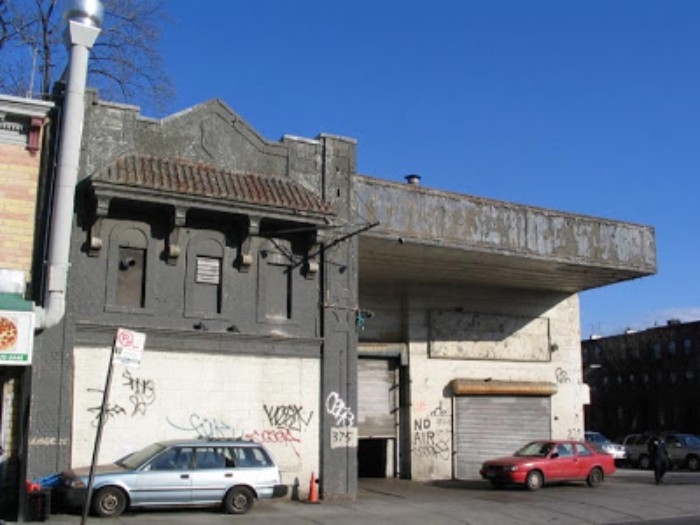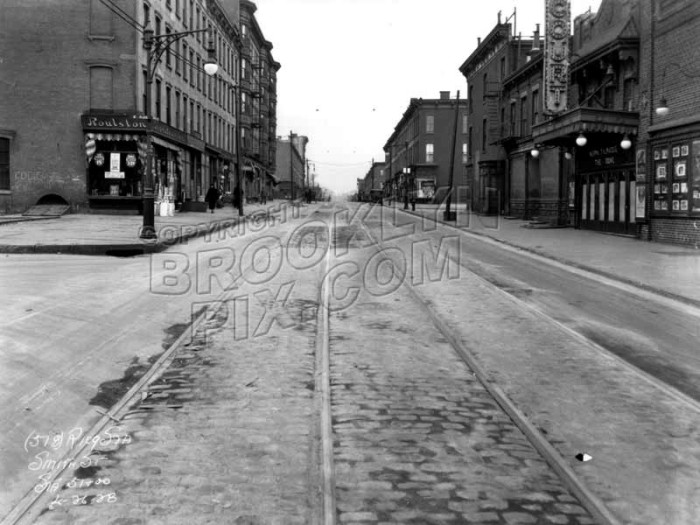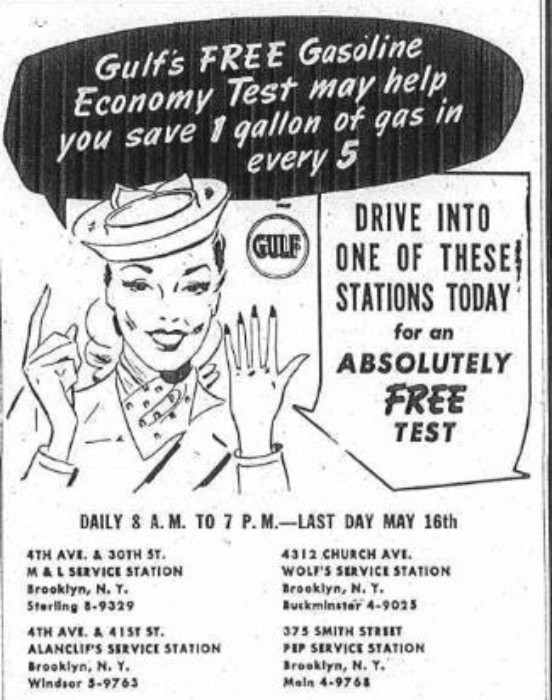Building of the Day: 375 Smith Street
Editor’s note: An updated version of this post can be viewed here. Brooklyn, one building at a time. Name: Former Court Theater, then Pep Service Station, now Lee’s Auto Service Address: 375 Smith Street Cross Streets: Corner 3rd Street Neighborhood: Carroll Gardens Year Built: Sometime in 1922, perhaps earlier Architectural Style: Vaguely Southwestern Spanish Mission…

Editor’s note: An updated version of this post can be viewed here.
Brooklyn, one building at a time.
Name: Former Court Theater, then Pep Service Station, now Lee’s Auto Service
Address: 375 Smith Street
Cross Streets: Corner 3rd Street
Neighborhood: Carroll Gardens
Year Built: Sometime in 1922, perhaps earlier
Architectural Style: Vaguely Southwestern Spanish Mission
Architect: Unknown
Landmarked: No
The story: Finding and tracing Brooklyn’s old theaters is a pursuit of a lifetime. There are so many changes in the city, as buildings are built, changed, torn down, or put to new use. Several people have made these theaters and their histories their passion, and thanks to them, it’s possible to find and identify theaters in the most unlikely of places. Sometimes, it’s easy, as when a theater becomes a church. Often the only exterior change is a cross replacing the marquee. Sometimes the marquee even stays.
Old theater buildings in Brooklyn come in many sizes and are mostly on major thoroughfares. That makes sense, as they needed to be easy to get to. They are most often found near subway stops, or where the old el trains, trolley cars, and later buses ran. Former theaters have turned up not only as churches, but as supermarkets, specialty stores and drug stores, bodegas, community buildings, schools, and occasionally, as garages and service stations. Today’s BOTD, a Carroll Gardens community fixture or years, was, believe it or not, a theater.
According to theater historian Dario Marotta, the Court Theater, formerly at 551 Court Street, moved to this location in 1922. It showed movies, and had a house organ to provide a sound track for the silent films. There may have been a theater called the Annette Theater here already, but there is no documentation to support that. There is documentation showing the Court Theater here. In December of 1922, they advertised the showing of the movie “The Half Breed,” a torrid and forbidden love story set in the Old West, with the handsome (and “educated”), but half white, half Indian tragic hero who falls in love with the beautiful daughter of the rich judge, who of course, hates Indians, due to his Cavalry Indian fighting days. The movie starred the popular actors, Wheeler Oakman and Ann May.
Our hero gets in a lot of trouble trying to get the land deeded to his Indian mother, and in the complicated process is on the lam from the law. He never gets the judge’s daughter, but settles for her plucky best friend, who loves him, but went unnoticed by him because he only had eyes for the judge’s daughter. Typical. The couple ends up riding off into the sunset together, accompanied by a flourish of gushy organ music. It was probably better without sound, anyway.
The theater had 560 seats, and showed popular features and melodramas. According to Mr. Marotta, the theater closed down in 1929, and was renovated, and re-opened in 1931 with a new screen, seating and sound system. That didn’t really help it for too long, as it was sold in a foreclosure auction in 1935. It stayed a theater until it closed permanently in 1941. By 1942, the building had been gutted, and sliced open, turned into a neighborhood garage called Pep Service Station. Their name appears in an ad in the Eagle in that year.
Today, not much has changed. The tax photo from the 1980s shows a service bay entrance below the Mediterranean style decorative roof on the front of the building. That’s since been closed up, and the service bay entrance moved to a different location. In the 1980s photo, the signage for “Peps” is still visible. If they still owned it, the garage had been in the same hands for forty years. According to records, the garage was sold to Jimmy Lee in 1992. No trace of a theater remains, just the odd façade of the part of the building that held the entrance. I’ve passed that garage any number of times, and never noticed it. Who knew?
If old theaters interest you, you are in luck. On line, cinematreasures.org is an invaluable resource for theater buildings, old and new. They have as many photographs as they can get their hands on, historical and contemporary, and their readers and contributors are some of the most well educated people on the subject. One of those occasional contributors, and a man whose books are well-thumbed in my office, is Cezar Del Valle, whose two volume compendium “The Brooklyn Theatre Index” is a priceless resource for these columns. I can well understand the attraction of finding out about these now-forgotten institutions of Brooklyn’s history and culture. It’s really fascinating. There were once hundreds of theaters in our neighborhoods, now there are only a handful. Finding out what happened to them and tracking down their whereabouts is a worthy hobby. GMAP
(Photo: Ken Roe for Cinematreasures.org)












Oh hey. Yeah, wait… Why was the “Court Theater” on Smith Street?
‘very cool’, ‘pretty cool’,’neglected/cool interior’ — Never knew so many teenagers commented on this blog.
I never knew that was a theater. Very cool.
That was my mechanic when I used to live in the area. They always did a great job and weren’t too expensive.
interesting story but what a dump.